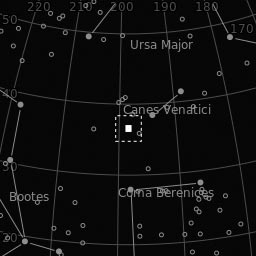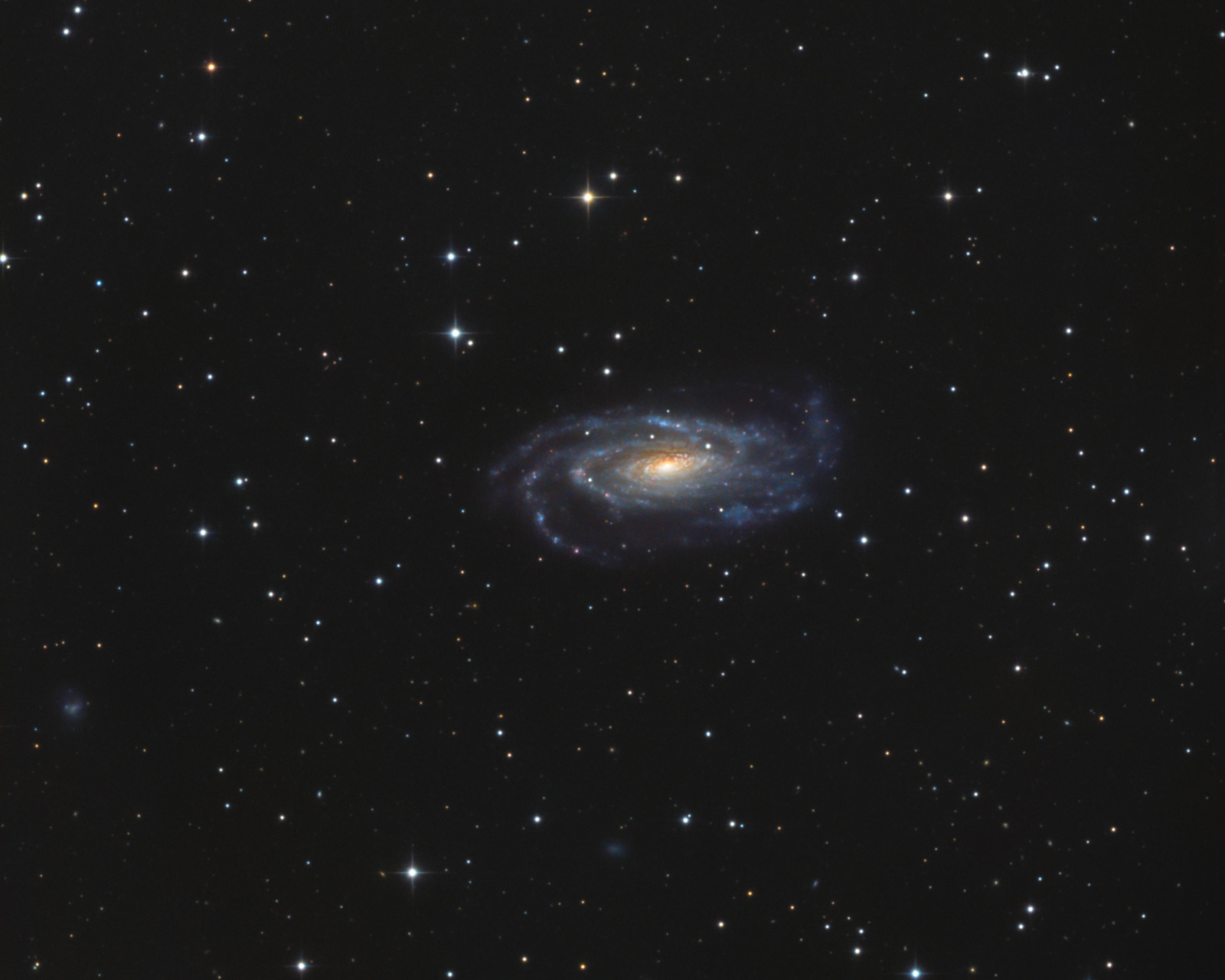
NGC 5033
Spiral galaxy in the constellation of Canes Venatici

Spiral galaxy in the constellation of Canes Venatici
NGC 5033 is a spiral galaxy in the constellation of Canes Venatici and and about 37-60 million light years away from Earth. NGC 5033 has an active galactic core with a super massive black hole.
| Object: | NGC 5033 |
| Date of exposures: | 19.04.2018, 20.04.2018, 21.04.2018 |
| Distance: | 37 Mio. Lightyears |
| Exposures: | L: 54 x 480", RGB: 73 x 300", Sum: 13,3 hrs. |
| Telescope: | 10'', F4 Newton |
| Focal length: | 1000 mm |
| Filter: | Astrodon RGB E-Series, Astronomik CLS CCD Filter |
| Camera: | Atik 460Exm |
| Guiding: | Off Axis Guider, Lodestar |
| Mount: | EQ8 |
The galaxy has a very bright central area and relatively weak outer areas with clear distortions. NGC 5033 contains a Seyfert core (active galactic nucleus). This is a compact region in the center of the galaxy with much higher radiation activity than normally be expected. The excess radiation in the wave ranges radio, microwave, infrared, optics, ultraviolet, X-rays and gamma rays is not generated by stars. The radiation is considered to be the result of the accumulation of matter through a supermassive black hole at the center of its host galaxy.
A crop rotated by 90°:

Integral field spectroscopic observations of the center of NGC 5033 show that the Seyfert nucleus is not in the kinematic center of the galaxy (the point around which the stars rotate in the galaxies). This has been interpreted as evidence that this galaxy has undergone a fusion. The displacement of the Seyfert core from the kinematic center can destabilize the rotation of the gas at the center of the galaxy, causing gas to fall into the Seyfert core. This unbalance might explain the distortions in the spiral arms.
NGC 5033 and the nearby spiral galaxy NGC 5005 form a physical pair of galaxies. The two galaxies influence each other slightly gravitatively, but are not yet close enough to be distorted by the tidal forces of the gravitational interaction. The weaker Irregular Galaxy IC 4182 also belongs to this group.
NGC 5033 was discovered on 1 May 1785 by the German-British astronomer Wilhelm Herschel.